Auto racing ranks among the most physically and mentally demanding sports. While audiences hear engines roar and see drivers making split-second decisions, what is often forgotten is the bodily toll it takes on the driver.
Emerging recovery and performance enhancement techniques like red light therapy are attracting attention for their potential to improve drivers' health and track performance.

Physical Demands of Auto Racing
Impact of G-Forces on Driver's Body
These G-forces are most commonly seen in sharp turns, acceleration, and braking during auto racing which usually gives drivers more than 5 Gs of force stressing their entire neck, back, and core muscles. Chronic pain, stiffness, and muscle imbalances may develop over time from repeated exposure. Microtears usually develop in their muscles as they are continuously stressed and require proper recovery methods to ensure peak physical condition.
Cardiovascular Stress During Competition
Auto racing isn't only about driving. It's an aerobic workout. During races, drivers' heart rates typically average between 150-180 beats per minute for extended periods. High cockpit temperature and prolonged mental focus increase the stress level and might lead to dehydration and fatigue. In these conditions, recovery is an important part of health and performance in the sport.

Red Light Therapy for Racing Recovery
Managing Musculoskeletal Strain
Red light therapy also known as RLT works on low levels of red-to-near-infrared light wavelengths penetrating the skin stimulating cellular activity. This therapy helps alleviate musculoskeletal strain in drivers. RLT promotes blood circulation, accelerates tissue repair, reduces soreness, and shortens recovery time. Its potent anti-inflammatory properties help reduce peripheral swelling after prolonged high G-force exposure, enabling athletes to prepare effectively for subsequent races.
Enhancing Post-Race Recovery Protocols
Recovery after the race is an important component of motorsports. Most drivers feel fatigue that accumulates from having back-to-back races, which limits their ability to perform in subsequent competitions. Hence, recovery using red light therapy may improve outcomes such as muscle relaxation and reduced oxidative stress. Several sports teams and elite athletes are now making use of RLT to improve sleep, which is an important recovery parameter and would equally benefit drivers who live under harsh schedules each day.
Performance Optimization Through Light Therapy
Improving Focus and Reaction Time
In automotive racing, every moment counts, and even a split second can determine victory or defeat. Research suggests that red light therapy enhances cognitive performance by improving mitochondrial function in brain cells, which boosts focus, reaction times, and decision-making under stress for racers. Regular RLT sessions could help drivers stay mentally nimble over extended competitions and racing day-to-day.
Combating Heat and Environmental Stress
Usually, racing environments boast hot temperatures, especially in high-performance vehicles where cockpit temperatures can go above 100°F (38°C). Extended exposure to such situations might lead to heat exhaustion as well as an impaired ability to concentrate. RLT has been demonstrated to reduce thermal stress by enhancing cellular resilience and regulating body temperature more effectively. This further benefit may keep the driver more comfortable and focused during the straining race.
Long-Term Health Management
Preventing Chronic Physical Issues
The most frequent problems lead to repetitive strain injuries and chronic pain. Red light therapy is thought to play a preventive role by enhancing tissue healing and reducing inflammation, potentially preventing the development of chronic issues. For example, RLT may also help select drivers by improving the flexibility of joints and the maintenance of muscle integrity toward the end of the work life, further minimizing unemployment due to injuries sustained while driving.
Supporting Overall Driver Wellness
Beyond its physical benefits, red light therapy promotes overall driver wellness by enhancing sleep, reducing stress, and improving mood. Other holistic benefits could influence the overall performance of drivers. A good quality of life will improve performance by optimizing the drive both on and off the track.
Conclusion
Meeting the intense demands of auto racing—requiring peak performance, resilience, and rapid recovery—has never been for the weak. Red light therapy is a rather good answer to the special problems that a driver finds himself in: musculoskeletal injuries and improving mental acuity.
Incorporating RLT into training and recovery routines can enhance drivers' performance and support long-term health, giving these high-speed competitors a competitive edge. With advancing technologies, the role of red light therapy in motorsports is set to increase, opening up another new avenue for shining light on driver well-being and performance.
References
- Glass GE. Photobiomodulation: The Clinical Applications of Low-Level Light Therapy. Aesthet Surg J. 2021 May 18;41(6):723-738. doi: 10.1093/asj/sjab025. Erratum in: Aesthet Surg J. 2022 Apr 12;42(5):566. doi: 10.1093/asj/sjab396. PMID: 33471046.
- Borges LS, Cerqueira MS, dos Santos Rocha JA, Conrado LA, Machado M, Pereira R, Pinto Neto O. Light-emitting diode phototherapy improves muscle recovery after a damaging exercise. Lasers Med Sci. 2014 May;29(3):1139-44. doi: 10.1007/s10103-013-1486-z. Epub 2013 Nov 21. PMID: 24258312.



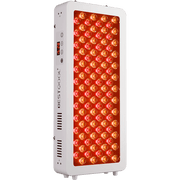









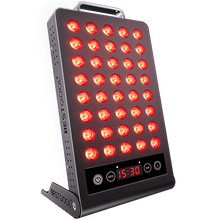
 Small
Small
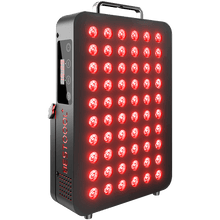
 Moderate
Moderate
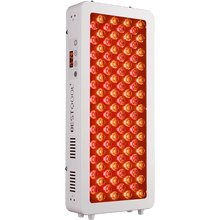
 Moderate
Moderate
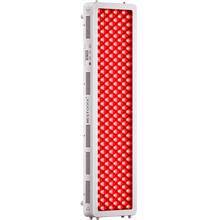
 Moderate
Moderate
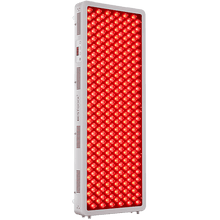
 Full
Full



